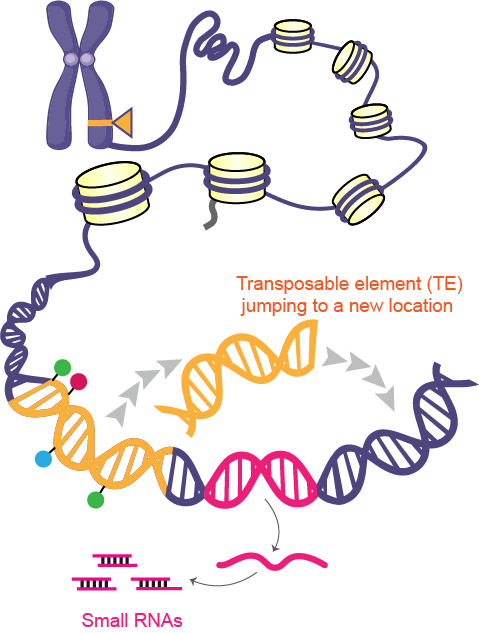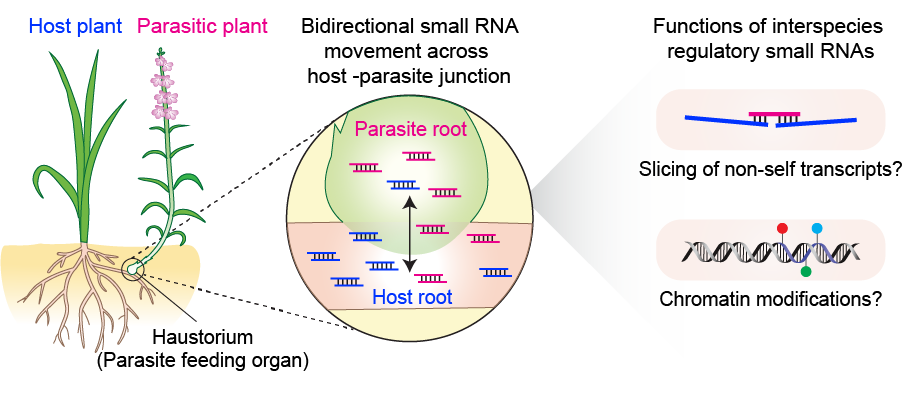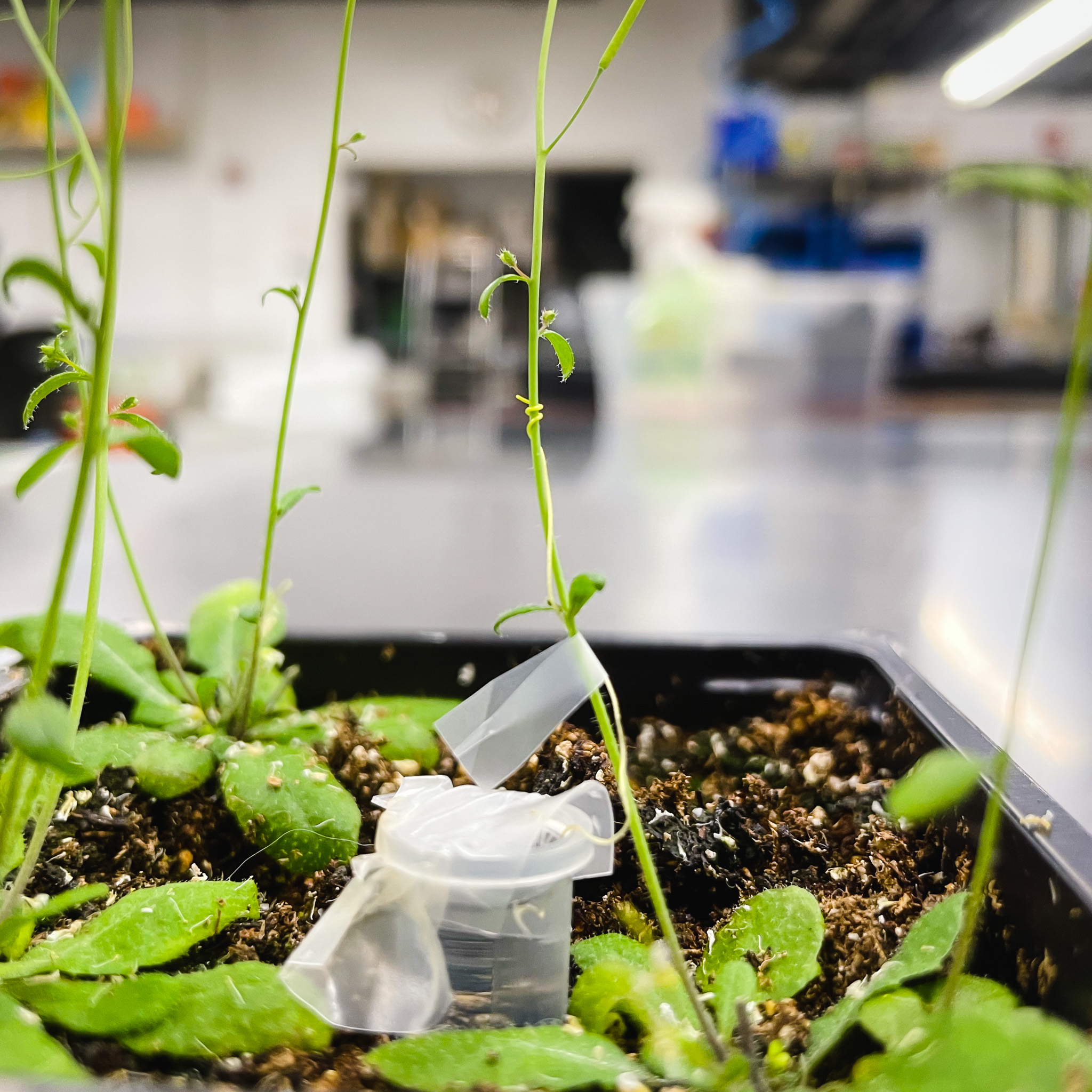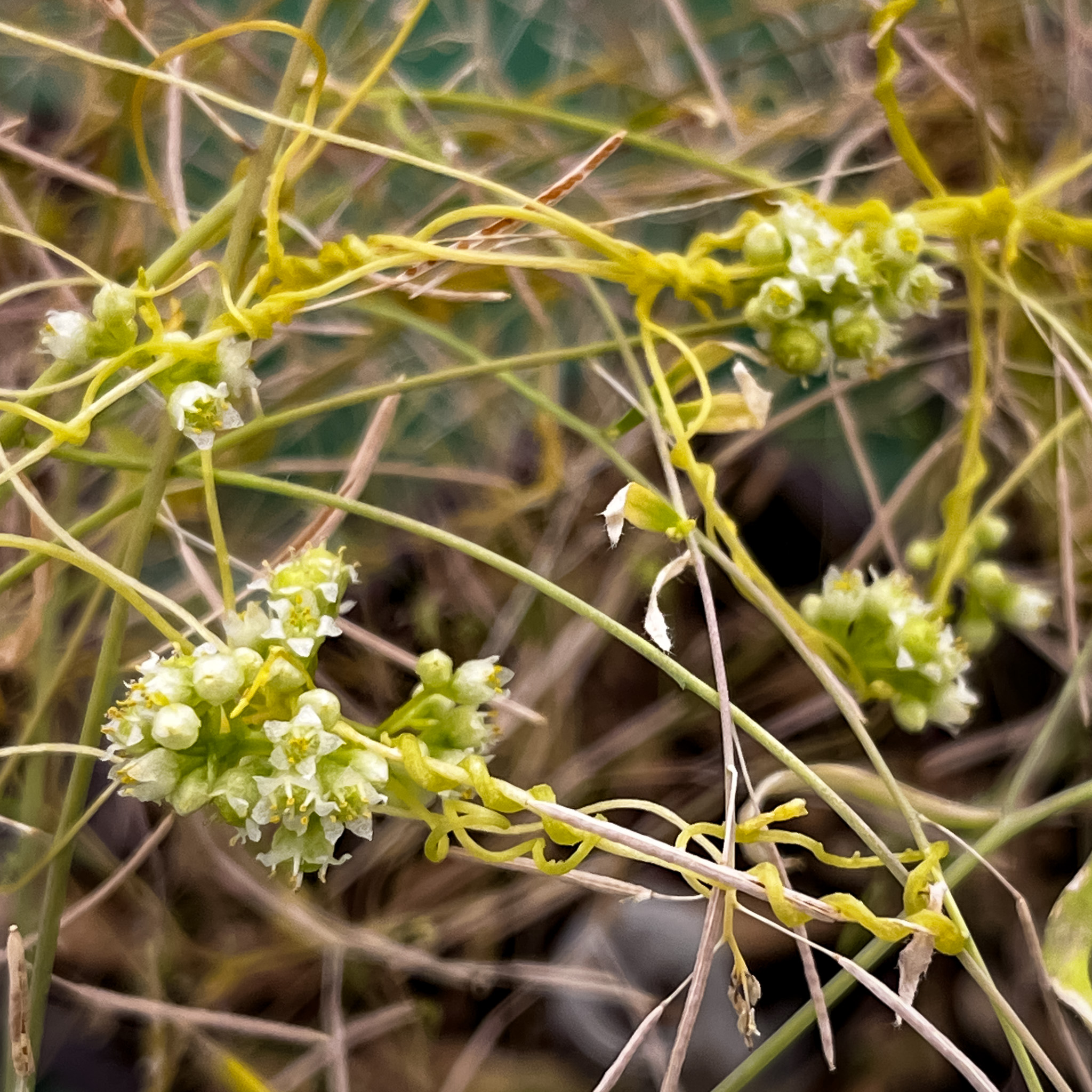 Often considered as the genomic ‘junkyard’, the non-genic regions of the genome are actually rich sources of many regulatory elements. These include transposable elements which are ubiquitous DNA fragments that can move within and across genomes, thereby causing structural variations / mutations. Small RNAs (20-24 nt) are another important class of non-genic elements that regulate gene expression through target RNA slicing (RNA interference) and defend the genome against harmful transposon activity. Growing evidence suggests that small RNAs can also play important role in interspecies communication (Shahid et al., 2018). Despite the regulatory potential of small RNAs and transposons, these are often poorly annotated in the genome which greatly hinders understanding the extent of their biological roles. Our Lab’s central biological questions focus on the evolution, diversity, and regulation of non-genic elements and their role in interspecies communication (in particular host - parasitic plant communication). We use bioinformatics, genomics, molecular and synthetic biology approaches to address research questions.
Often considered as the genomic ‘junkyard’, the non-genic regions of the genome are actually rich sources of many regulatory elements. These include transposable elements which are ubiquitous DNA fragments that can move within and across genomes, thereby causing structural variations / mutations. Small RNAs (20-24 nt) are another important class of non-genic elements that regulate gene expression through target RNA slicing (RNA interference) and defend the genome against harmful transposon activity. Growing evidence suggests that small RNAs can also play important role in interspecies communication (Shahid et al., 2018). Despite the regulatory potential of small RNAs and transposons, these are often poorly annotated in the genome which greatly hinders understanding the extent of their biological roles. Our Lab’s central biological questions focus on the evolution, diversity, and regulation of non-genic elements and their role in interspecies communication (in particular host - parasitic plant communication). We use bioinformatics, genomics, molecular and synthetic biology approaches to address research questions.
Below are some of the current research projects in the Lab.
How do mobile small RNAs facilitate host - parasitic plant communication?
Among the flowering plants, approximately 4,500 species belonging to 28 different families are known as parasitic plants. Some of the highly invasive agricultural weeds such as Striga (witchweed), Cuscuta (dodder) and Orobanche (broomrape) belong to this group of plants. Parasitic plants provide an excellent system for dissecting interspecies communication since these naturally graft into many unrelated host plants and engage in bidirectional exchange of macromolecules including DNA, RNA, and proteins. Our previous work demonstrated that the stem parasitic plant Cuscuta also exchanges small RNAs with its hosts, some of which are used to silence host genes involved in defense and developmental pathways. A major focus in the lab is to identify the impact of interspecies regulatory small RNAs in diverse host -parasite interactions. Beyond Cuscuta, little is known about the function and conservation of interspecies-regulatory small RNA populations in other parasitic plant species. We are currently collaborating with the laboratories of Michael Timko (University of Virginia) and Claude dePamphilis (Penn State University) to examine regulatory small RNAs from the root parasite Striga and its host plants.

Mechanism and role of de novo chromatin modifications in host - parasitic plant interactions
Majority of the expressed plant small RNAs function in the RNA-directed DNA methylation pathway for epigenetic silencing of transposable elements. To better understand the role of chromatin modifications and epigenetic regulation in plant parasitism, we are currently studying the dynamic changes in parasite and host genomic DNA methylation during Cuscuta - Arabidopsis interactions.

